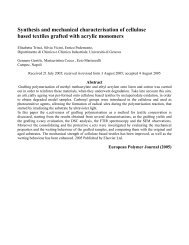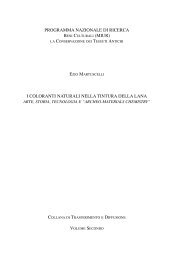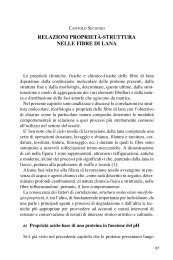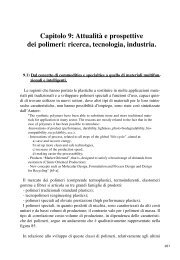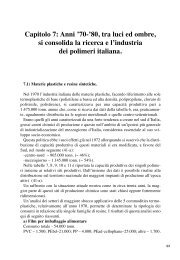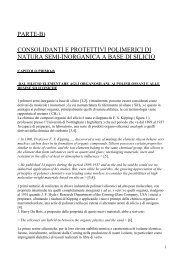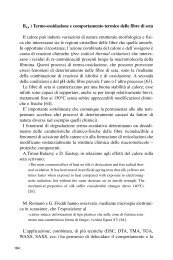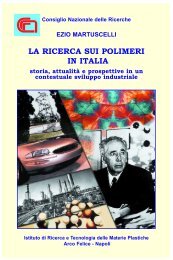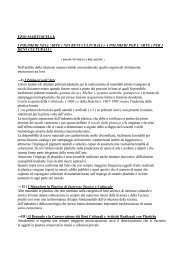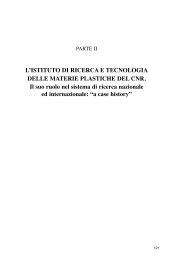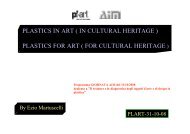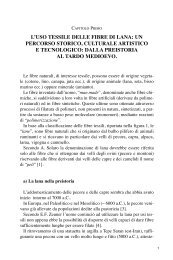ON- POLYMERS - ezio martuscelli
ON- POLYMERS - ezio martuscelli
ON- POLYMERS - ezio martuscelli
Create successful ePaper yourself
Turn your PDF publications into a flip-book with our unique Google optimized e-Paper software.
Iii) Synthetic Plastics- they are newly synthetised by the man starting from small molecules, called<br />
monomers. The “Era” of synthetic plastics begun in 1908 when Leo Hendrix Baekeland patended<br />
the synthesis procedure and the method of processing of the phenol formaldehyde thermosetting<br />
resins ( comonly called Bakelite in honor of its inventor ).<br />
Polyvinyl chloride (PVC), polymethyl methacrylate( PMMA) , polyethylene, polyamide (Nylon),<br />
polyacrylonitrile, polyurethane, polycarbonate, saturated and isaturated polyester, epoxies, , teflon,<br />
etc., belong to the synthetic era of plastics.<br />
The number of synthetic polymers developed since the beginning of the twentieth century is<br />
enormous. These compounds differ dramatically from each other as far as their proprties are<br />
concerned. Thus the identification of the type of plastic from which an artefacts is made represents<br />
one of the main problem that one must afford for the sake of their conservation.<br />
Plastics, since the birth of the polymer industry, were preferred, in many applications, to traditional<br />
materials such as, wood, metal, glass, ceramics, ivory, etc.<br />
The advantages in using Plastics materials, constituted by polymer based formulations, rather than<br />
traditional materials, were essentially the following:<br />
---Easy processing;<br />
---Low production cost;<br />
---Weight saving;<br />
---Colourability<br />
---Innovative performances;<br />
---High rate of production.<br />
The disadvantages in making items in plastics were mostly related to:<br />
---Instability against environmental and internal degradation factors;<br />
---Necessity to use additives (stabilizers, plasticizers, fillers, aid processing etc.).<br />
Artefacts in plastics, more and more present in private collections and in many museums including<br />
the art museums and the science museums, may be subdivided in the following two broad<br />
categories: artistic objects and items of historical and cultural interest.<br />
A ) Plastics in artistic objects<br />
Plastics had ( still have ) an important function in the structuration of works of art. They represented<br />
( represent ) an important means of expression of artists and designers.<br />
According to G. Williams, the reasons which convinced artists and designers, since the beginning of<br />
polymer Era, in using plastic materials for their works, may be summarized as follows:<br />
< It is amongst the most versatile group of materials known, with different varieties notable for<br />
their relative strengths, ranging from total rigidity to complete flexibility, not to mention inertness<br />
and stability. Plastics enabled the development of an infinite number of novel shapes and colours<br />
which were impossible to achieve using natural materials. The moulding of plastic requires<br />
expensive tooling and a high degree of industrialisation, yet the resulting products can be massproduced<br />
cheaply and in great quantity. Versatility, novelty and the potential for replication were<br />
the perfect qualities of any material for the manufacturers of new consumer goods > [4].



